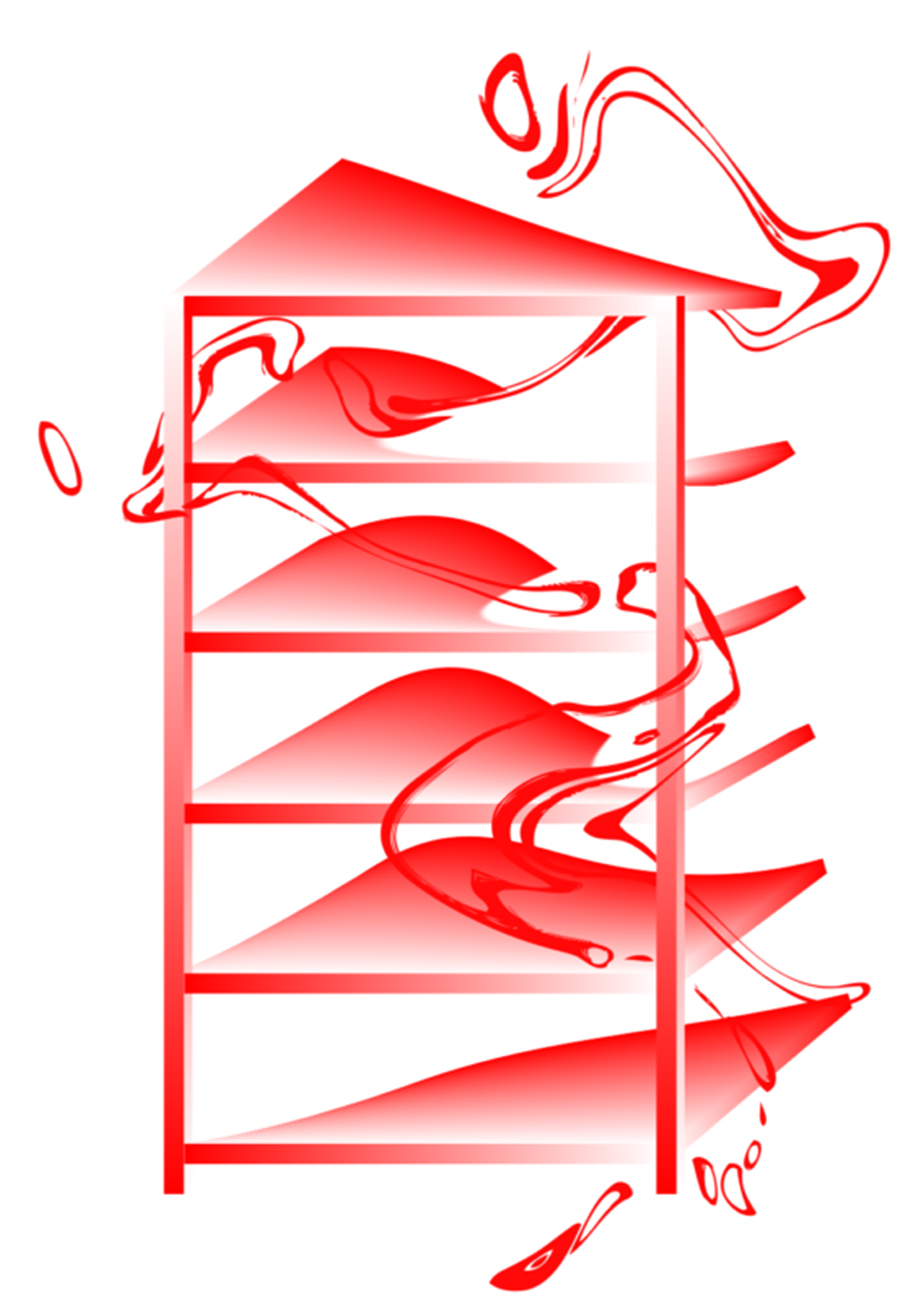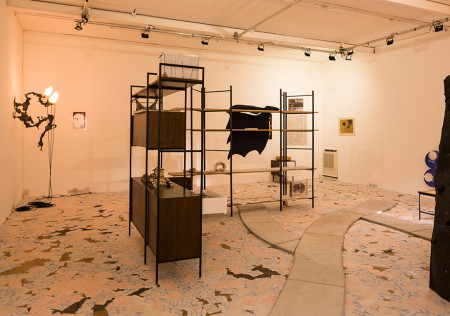- The school
- Studies and Research
- BACHELOR
- MASTER
- DOCTORATE
- RESEARCH
- TRANSDISCIPLINARITY
- POOLS
- CONTINUING EDUCATION
- Continuing education 2025-2026
- Artificial Intelligence, initiation
- Artificial Intelligence, Advanced
- Artificial intelligence open-source, ComfyUI
- Creative coding
- Engage with drawing
- Frame-by-frame animation
- 3D exhibition modeling in SketchUp
- 3D modeling, Blender
- Point cloud scanning
- Documentary podcast
- Serious games
- For students
- Studying at the HEAD
- InfoLab
- Living in Geneva
- Tuition fees and sholarship
- Library
- Regulations and instructions
- Projects
- Events
- Press
- Partnerships and prizes
Exhibition Wie zu Hause, Wo ich nicht bin
Centre d’Art Contemporain Genève
Rue des Vieux-Grenadiers 10
1205 Genève
An exhibition conceived as a conversation between artists based in Geneva and works from Archivio Conz Berlin, with special guests: Ahouloumeldem, Geraldo de Barros and Jérémy Dafflon.
Organization: Niels Trannois
Artists: Jacopo Belloni, Johana Blanc, Constance Brosse, Sylvain Gelewski, Vicente Lesser, Henrique Loja, Sara Ravelli, Paulo Wirz, Trannois Niels
Selection of works by Archivio Conz: Stefania Palumbo, Gigiotto del Vecchio
Performance: Jérémy Dafflon
Costume: Ahouloumeldem
Scenography: Dpot - mobiliário brasileiro and Arquivo Geraldo de Barros
Wie zu Hause, Wo ich nicht bin is the follow-up to the exhibition Fridges Are not Frigid held in September 2019 at the Archivio Conz Berlin. On that occasion, a group of eight students from the HEAD – Genève was asked to compose an exhibition as a dialogue between their works and those of Francesco Conz’ Fluxus archive. Mounted in the Project Space at the Centre d’Art Contemporain Genève, Wie zu Hause, Wo ich nicht bin is an expanded iteration of that event.
Archivio Conz Berlin holds the collection that Francesco Conz (Cittadella, 1935 – Verona, 2010) built up over thirty or so years. More than simply a collector, he worked closely with artists of the leading avant-garde movements of his time – Fluxus, Concrete Poetry, Actionism and Lettrism. Going beyond the formation of a collection, Francesco Conz provided a channel that enabled the cluster of Fluxus artists to reach Italy, and he was as much a benefactor of the arts as he was a patron. He was involved in the artists’ creative processes through the works and “portfolios” (artists’ projects in the form of limited editions) that he was able to produce. On his death he left more than 3000 works currently in the process of being archived in Berlin.
Linked to the history of the archive, Wie zu Hause, Wo ich nicht bin has been devised as the articulation between what Francesco Conz’s collection originally constituted and its impact today. In bringing out this impact in the exhibition, the aim is to fashion a way of reading the works that is not presided by appreciation of their historical continuum, but rather by the subtle affinities that they share, based on their commonalities and unpredictability. The works are not decontextualized, it is more a question of an actualization of the context of their appearance in the present time, and the sense sparked of our relationship to history. Hence, the exhibition is conceived as a sensitive environment on the basis of being inhabited and embodied, to the point of reification, by Francesco Conz himself, by dint of an avatar present in this imagined collection formed by a selection of works from Archivio Conz Berlin combined with works produced for the occasion by eight international artists.
In 2010, in an interview with the artist Jean-Luc Blanc, the critic and curator Alexis Vaillant wrote: “The English economist John Maynard Keynes remarked at the start of the 20th century that ‘What ends up occurring is not the inevitable, but the unpredictable”. In other words, that the impossible is predictable and that only the unpredictable is able to change things”. To which Jean-Luc Blanc replied: “The unknown indeed causes problems. It resists the automatisms of the era, and thus becomes political. You have to be disturbed to understand. To be moved and diverted by something outside of you but which comes from yourself and yet that you don’t recognise is something of consequence…”*
Beneath the poetic licence of the title Wie zu Hause, Wo ich nicht bin resides the idea that the subject (here, the artists in the exhibition) views the relationship between the interior (the self, the construction of the inner being, the private sphere) and the exterior (the representation of the self to the outside world, the political being) as one of equivalence. This equivalence infers the permeability of these spheres and the necessity of their disarray. Hence, not only can something occur in the house where I am not, but what happens there, what is incited there, has to be “performed” outside of it.
Considering these spheres, the movement that engenders the construction of Wie zu Hause, Wo ich nicht bin is a ricochet in which the thought that upholds the project bounces on the surface of History (and histories), taking with it fragments, in the form of works, thereby creating links that drive one another on this surface of meaning. Included among the circles of which Wie zu Hause, Wo ich nicht bin is composed, an androgynous avatar of a transhistorical Francesco Conz, whose performance was collectively devised by the artists in the exhibition, will wheel about in a domestic setting. In this historical digression, the fabric of the collection is composed of works by the participants and works selected by Archivio Conz Berlin. The costume worn by the performer who personifies Francesco Conz’s avatar was created by Ahouloumeldem, a pair of designers – Joy Ahoulou and Emilie Meldem – based in Berlin. The exhibition setting will feature furniture designed by Geraldo de Barros (1923–1998), a Brazilian artist affiliated with Fluxus and who was close to Francesco Conz. In parallel with his work as an artist, in 1954 de Barros founded Unilabor, a furniture factory based on the principle of a cooperative, in which each craftsman held equal shares in the company. Finally, the portfolio oOoo0Oo0o, a quintessential accessory in the performance during the exhibition, was produced collectively by the artists, linked to those produced by Francesco Conz for the artists he collected.
Niels Trannois
* TAKEN FROM THE CATALOGUE: ALEXIS VAILLANT (ÉD.), JEAN-LUC BLANC, OPERA ROCK, CAPC, BORDEAUX / STERNBERG PRESS, BERLIN, 2009. .
Exhibition organized in partnership with HEAD – Geneva, Archivio Conz Berlin and Arquivo Geraldo de Barros

Exposition Wie zu Hause, Wo ich nicht bin
© HEAD – Genève
© HEAD – Genève

